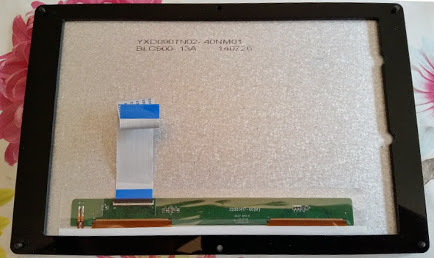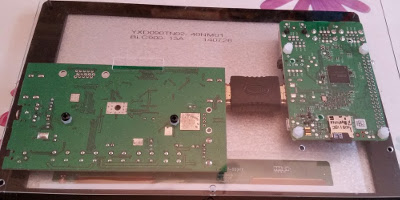HDMI Pi – Raspberry Pi screen – upgrade to Raspberry Pi 2 / B+
I bought a HDMI Pi, Raspberry Pi screen through the kickstarter project. When the Kickstarter was run then there were only the model A and model B Raspberry Pi computers and the screen was designed for the model B. Although the B+ was released before the screens actually shipped for logistics reasons (and to reduce further delays) they shipped all the kickstarter HDMI Pi screens designed for the Model B.
Since the Raspberry Pi B+ was released and now the Raspberry Pi 2 the team behind the HDMIPI have created an upgrade kit, but unfortunately that only fits a newer version of the HDMIPI and not the ones from the original Kickstarter. It is however not too difficult to change the HDMIPI to fit the new B+ / Raspberry Pi2 layer.
Upgrading the HDMIPi to a Raspberry Pi 2
First I bought the new layer from Cyntech – HDMI B+ and Pi2 back plate. I also bought a HDMI stand at the same time (more about that later).
First remove the back of the screen, and the next layer to allow the old Raspberry Pi to be removed.
Position the new Raspberry Pi on to the HDMI connector. If you have an original HDMI Pi then you will probably find that the mounting holes are in the wrong position for the B+ / Raspberry Pi 2, so mark the positions using a pen (eg. Write-4-all fine).

Remove the HDMI Pi interface board. Carefully drill four, 3mm holes into the positions marked. I am fortunate to have a bench drill which makes it much easier to drill, if using a hand drill you will need to be more careful to drill straight at the exact point.

You may notice that two of the holes drilled are directly in-line with the layer below. This will mean that it is not possible to put a screw head into that position. So using a round file create a indentation into the layer below as shown. You will need to wipe the layer down before refitting it, which is especially important if you have ever used the file on metal previously.

Now mount the new Raspberry Pi using the new screw holes. The screws provided are metal, but instead I used nylon screws which will tolerate a small amount of misalignment between the holes for the Raspberry Pi and the new holes. I also thought that now the board was mounted with 4 instead of the two screws this is more than enough support. I used an oversized nylon nut as a spacer between the Raspberry Pi and the layer (similar to how the HDMIPI interface board is mounted).

The miniUSB cable used to power the Raspberry Pi also needs to be replaced. The new micro USB adapter cable provided is a very tight fit and involved bending it into an S-shape. I was a bit worried about the amount of pressure being put onto the Raspberry Pi socket, but now it is in place and mounted I think it will be OK and be less wear and tear than regularly plugging / unplugging the cable.
The next thing is the tricky bit, although this is the same whether you have bought your HDMIPi designed for the B+ rather than having to modify it. There is a bit of plastic that goes across the USB sockets / Ethernet port. Although it may be possible to leave this in place if using only small dongles on my previous version I found it useful to remove that to make it easier to connect / disconnect peripherals. On the old version of the HDMI PI it was fairly easy to remove the plastic that went past the USB / Ethernet socket by breaking it off by hand. I tried this on the new plate and rather than breaking off the plate cleanly it started to crack the narrow bit of plastic next to it.
If you want to remove that plate across the ports then I recommend using a small hacksaw rather than trying to break it off by hand

Before screwing the back onto the HDMIPi I did need to file a small amount of the plastic off due to the Raspberry Pi being mounted slightly closer to the HDMI interface board. Then I screwed the back on and it was complete.
HDMI Pi stand
The HDMI Pi stand does fit except for the mounting point where I removed the USB / Ethernet cover. The stand goes between the two USB sockets. This works for the small adapters that I used here, but may be a problem if connecting devices with larger USB plugs.

An alternative is a wire type stand designed for tablets such as the one shown below. I did think that the official stand would be more sturdy, but I prefer that this one isn’t against the USB ports.

Summary
The HDMI Pi is still the only low cost screen that can mount the Raspberry Pi inside. The upgrade for the first edition HDMI Pi screens involves some drilling and filing, but should be within the scope of most people.
